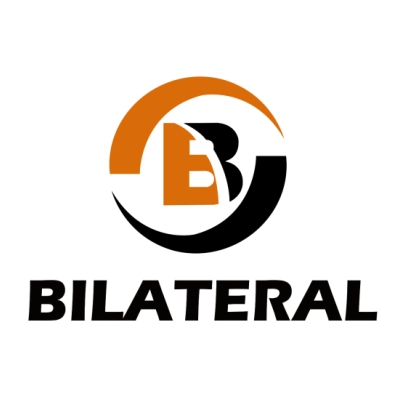When embarking on a solar installation project, one of the most important decisions you’ll make is selecting the right solar mounting system. Whether you’re installing solar panels on a residential roof, commercial building, or a large-scale ground-mounted system, the mounting system plays a critical role in ensuring the durability, efficiency, and safety of your solar energy system.
In this guide, we’ll walk you through the factors you should consider when choosing a solar mounting system, the different types available, and how to select one that best suits your specific needs.
Why Choosing the Right Solar Mounting System Matters
The solar mounting system is the foundation that holds your solar panels in place, so it’s essential to choose a system that is:
- Durable and Weather-Resistant: It needs to withstand harsh weather conditions like wind, rain, snow, and UV exposure without compromising the integrity of the system.
- Compatible with Your Panels: The system should be designed to accommodate the type, size, and weight of the solar panels you are using.
- Cost-Effective: While durability and reliability are key, a solar mounting system should also be cost-effective for your project budget.
- Easy to Install: Depending on the complexity of your project, the mounting system should allow for an efficient and straightforward installation process.
Types of Solar Mounting Systems
There are several types of solar mounting systems, each suited to different types of installations. Let’s explore the most common ones:
1. Roof-Mounted Solar Systems
Roof-mounted solar mounting systems are the most common choice for residential and commercial buildings. These systems are attached directly to the roof of the building and come in various configurations:
- Fixed Roof Mounting: A simple and cost-effective solution, ideal for residential roofs with minimal slope. This system keeps panels fixed at an optimal angle for maximum sun exposure.
- Adjustable Roof Mounting: Offers the flexibility to adjust the angle of the panels to optimize performance, especially for commercial installations.
- Ballasted Roof Mounting: Used for flat roofs, this system relies on weight (usually concrete blocks) to secure the panels without penetrating the roof surface. It’s perfect for buildings that cannot support roof penetrations.
Considerations:
- Roof type (flat, sloped, or metal)
- Structural integrity and ability to support the system
- Roofing material and any necessary weatherproofing
2. Ground-Mounted Solar Systems
For larger installations or properties where roof space is limited or unsuitable for solar panels, ground-mounted systems are an excellent option. These systems are installed directly on the ground, typically in a field or open area.
- Pole-Mounted Systems: Solar panels are mounted on poles drilled into the ground, providing elevation to avoid shading from the ground and offering easy access for maintenance.
- Fixed Ground Mounts: These are ideal for large-scale solar installations and can be custom-designed to maximize exposure to the sun.
- Tracking Ground Mounts: These systems adjust the angle of the panels throughout the day to follow the sun’s path, ensuring maximum energy production. They’re typically more expensive but can yield higher efficiency.
Considerations:
- Land availability and space requirements
- Terrain and ground conditions (e.g., rocky or soft ground)
- Accessibility for maintenance and monitoring
3. Pole-Mounted Solar Systems
A variation of ground-mounted systems, pole-mounted systems elevate the solar panels on single or multiple poles. This mounting option is highly versatile and is often used for areas where the ground is uneven or where shading needs to be avoided. Pole mounts can also accommodate solar trackers.
Considerations:
- Height of the installation for optimal sun exposure
- Local regulations and zoning for pole structures
- Wind load and stability
Key Factors to Consider When Choosing a Solar Mounting System
1. Panel Type and Size
Not all solar panels are the same. Some are larger or heavier than others, so it’s essential to ensure that the mounting system you choose is compatible with the size and weight of your solar panels. If you’re using bifacial panels, which capture sunlight on both sides, you may need a different mounting system than for standard monofacial panels.
2. Roof or Ground Conditions
Evaluate the conditions of the location where the panels will be installed:
- Roof Type: Is it flat, sloped, or metal? Different roof types may require specialized mounts.
- Ground Type: Is the ground firm or soft? The soil and terrain conditions will determine whether you need concrete footings or a simpler system.
3. Orientation and Tilt
The optimal tilt and orientation of the solar panels are essential for maximizing energy generation. Roof-mounted systems are usually fixed, but adjustable systems allow you to change the angle of the panels. Ground-mounted systems, particularly tracking systems, can offer even more flexibility by adjusting the panels to follow the sun’s movement throughout the day.
4. Local Climate and Weather Conditions
Weather plays a huge role in the durability of your mounting system. In areas with heavy snow, high winds, or extreme heat, you’ll need a mounting system that is built to withstand these conditions. For example, corrosion-resistant materials like aluminum or stainless steel are ideal for coastal areas with salty air, while systems in snowy regions might require snow guards or additional structural support.
5. Budget
The cost of the mounting system can vary depending on the type and materials used. While ground-mounted systems and tracking mounts tend to be more expensive than roof-mounted systems, they can provide a higher return on investment through increased energy generation. Choose a mounting system that fits within your overall project budget but also consider long-term durability and performance.
Benefits of Choosing the Right Solar Mounting System
- Improved Efficiency: The right system ensures that your solar panels are positioned to receive maximum sunlight exposure.
- Long-Term Durability: A well-designed and properly installed mounting system enhances the overall lifespan of your solar panels.
- Lower Maintenance Costs: Quality systems reduce the likelihood of issues like panel displacement or damage, leading to lower maintenance costs over time.
- Aesthetic Appeal: Some mounting systems are designed to blend seamlessly with the architecture of the building, improving the visual appeal of your solar installation.
Conclusion
Choosing the right solar mounting system is crucial to the success of your solar energy project. By considering the specific needs of your installation—such as the type of roof, terrain, weather conditions, and budget—you can ensure that your solar panels are securely and efficiently mounted. Whether you’re opting for a roof-mounted system for a small residential project or a ground-mounted solution for a large-scale installation, the right system will optimize your energy production and enhance the longevity of your solar setup.
If you need help choosing the perfect solar mounting system for your project, our team of experts is here to guide you every step of the way. We offer a range of high-quality, durable solar mounting systems and fasteners to meet your needs. Contact us today to learn more!
If you’re ready to start your solar project or have questions about which mounting system is best for your needs, don’t hesitate to reach out to us for personalized recommendations and product details.




